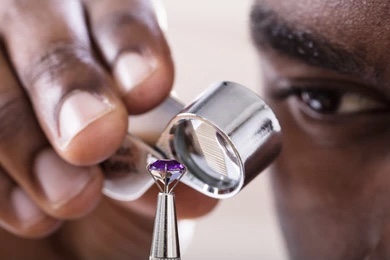
Alright, listen up, everyone! I'm about to lay down some serious rules for buying Ceylon sapphires. You better pay attention, because this is your ticket to gemstone greatness.
The factors that decide the value of a gemstone vary across most of its discernible features. Namely, these factors are 4C OT (Color, Clarity, Carat Weight, Cut, Origin and Treatment). Let us take a deeper dive into these features and see how they would affect the price and choice of your Sri Lankan gemstone.
Color: Ceylon blue sapphires are all about that intense, vivid blue. We're talking about a blue so deep it'll make the ocean jealous. And let me tell you, the purity and intensity of that blue? That's what separates the real deal from the knockoffs.
Clarity: These sapphires should be crystal clear, folks. None of that cloudy nonsense. You want to be able to see straight through these babies, with no inclusions or blemishes mucking up the view. The clearer, the better.
Cut: Don't even think about skimping on the cut, people. A well-executed cut can take a Ceylon sapphire from pretty to downright jaw-dropping. We're talking about skilled craftsmen here, carving these gems to perfection to maximize their beauty and value.
Carat Weight: Size matters, my friends, especially when it comes to sapphires. The bigger, the better, and the pricier. We're talking about stones the size of your fist here, and let me tell you, they're rarer than a unicorn. You want one of these bad boys? You better be prepared to fork over some serious cash.
Rarity: Ceylon sapphires are as rare as they come, folks. We're talking about gems so scarce they make gold look common. And let me tell you, the rarer they are, the more valuable they become. You want to get your hands on one of these beauties? You better be ready to hunt for it.
Origin: Make sure your sapphire is the real deal from Sri Lanka. None of that synthetic or lower quality nonsense. Stick with the genuine article, folks, or you'll be kicking yourself later.
Treatment: Don't even think about touching those treated sapphires! You want 'em raw, unheated, and untreated. That's where the real value lies, my friends. And make sure you get yourself a gemological certificate to prove it.
Certification: Only buy from reputable dealers who play by the rules. You want that stamp of approval from the big boys like GIA, GRS or Srilankan reputed Gemology Labs. It's your guarantee of quality and authenticity.
Ethical Sourcing: Stick with dealers who follow ethical mining practices, folks. You don't want to be supporting any shady business, trust me.
Follow these guidelines, and you'll be the proud owner of a top-quality, genuine Ceylon sapphire that will be mounted to Engagement ring or Favorite Sapphire Pendent,
that'll turn heads and make your friends green with envy.